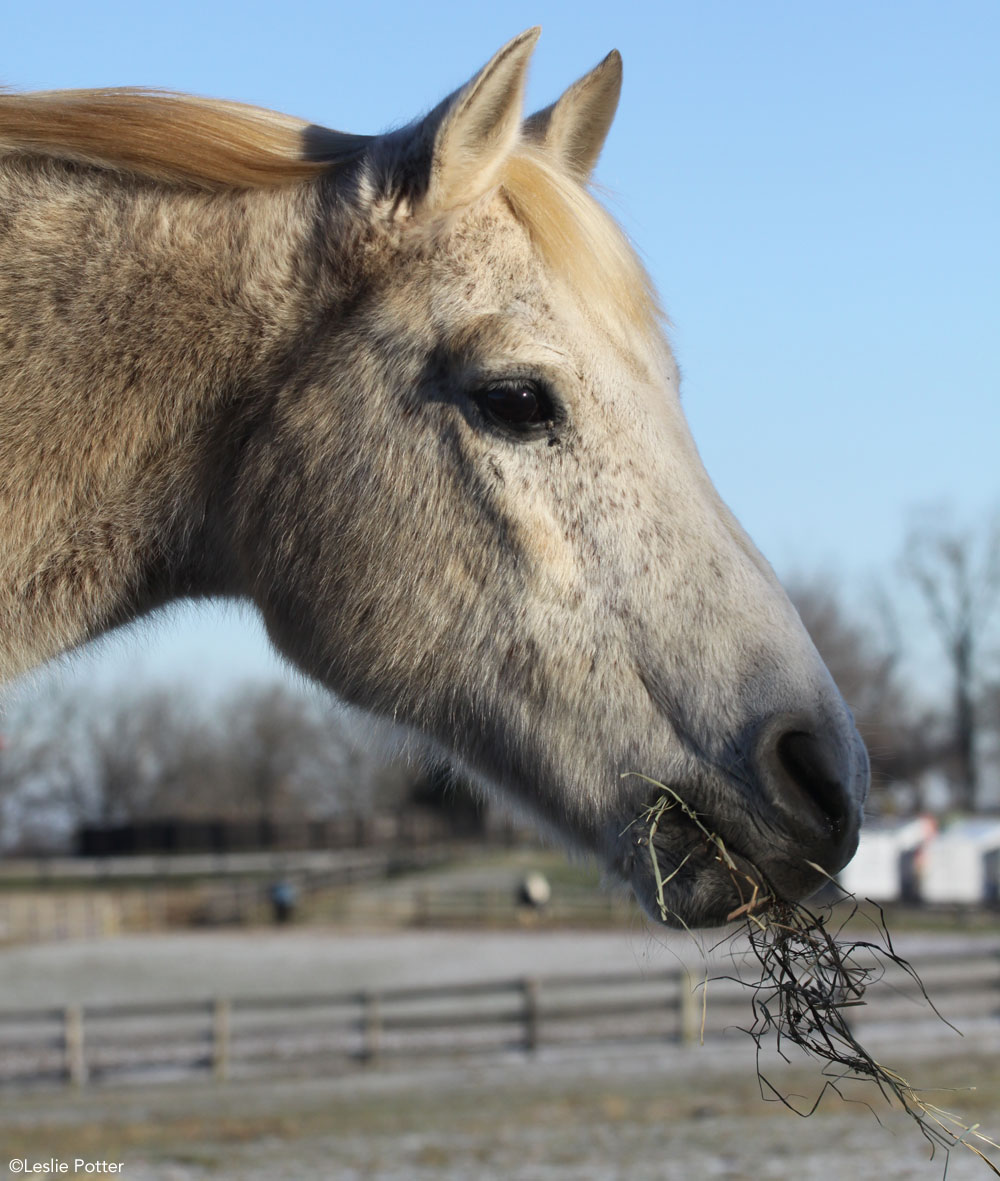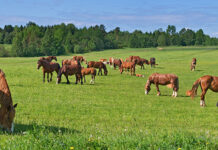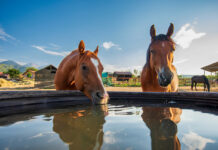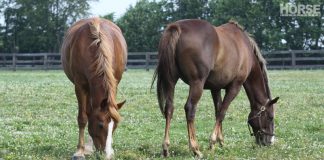
SPRING: Be careful when turning your horse out on pasture after a winter season of hay—that rich spring grass can be a shock to his system. To avoid triggering a case of colic or laminitis, reintroduce your horse to spring grazing slowly, gradually increasing the time he spends on pasture over two to three weeks. Horses that have previously foundered, or ponies (always prone to the condition) may have to be restricted from spring grazing entirely or fitted with grazing muzzles.
SUMMER: Heat and humidity can take their toll on both horses and riders. To ensure your horse is cooling himself effectively, provide constant access to clean, fresh water as well as loose or block salt. High-performance horses that sweat profusely may benefit from being offered electrolytes—but check the labels carefully; some commercial electrolyte preparations can be mostly sugar and coloring. Choose a product which lists sodium, chloride and potassium as the first few ingredients, and avoid those which list sucrose, glucose, dextrose, fructose or other sugars above the salt content. You can create your own electrolyte supplement by mixing a tablespoon each of ordinary table salt and “lite” salt (a mix of sodium chloride and potassium chloride, available at larger supermarkets) in a few tablespoons of applesauce.
FALL: Prepare your horse to weather winter by making sure he’s in good flesh now. If he’s a little ribby, gradually increase the amount of fiber in his diet, by offering more hay and/or other roughage sources (such as soaked beet pulp), throughout the day. Remember that if he’s on pasture, the nutritional value of the grazing plummets as the temperatures drop and the days grow shorter, so make sure his diet is nutritionally complete by feeding only good-quality hay, not more than a year old (vitamins in hay deteriorate over time), plus a commercial brand balanced grain ration if he needs more dietary energy. A broad-spectrum vitamin/mineral supplement can also be helpful through the fall and winter seasons. Click here for more information on fall grazing.
WINTER: Equine water intake decreases in winter, and the incidence of impaction colic skyrockets—so encourage your horse to drink at every opportunity. Break the ice in his bucket or trough several times a day, use a stock-tank heater, or offer lukewarm water (about 45-50 degrees F) to increase his desire to take in a lot of liquid. Click here for more on winter feeding.
Horses generate heat when they digest roughage, so to help your horse maintain his internal temperature, offer him free-choice hay rather than increasing his grain ration. Keep a close eye on your horse’s weight throughout the winter, too, especially if he’s in his teens or twenties or has dental issues.
Further Reading
Seven Feeding Myths Shattered
Storing Bagged Feed
The author is a freelance writer based in Canada.






Tip for turning horses out on fresh or frosted grass.
Always provide hay before turning horses out on grass when making the transition from hay to field.Feed at least 1 flake to fill them up. It will encourage them not to gorge themselves on the grass. As recommended limit turn out time for the first week. After a week, make he transition to a safe field turnout without hay.
Great tips.